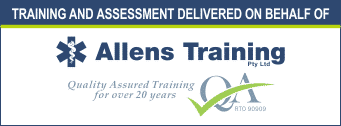Imagine you’re hiking with friends on a beautiful Sunday morning. Everything is perfect until one of your friends slips and falls. You hear a loud crack, and immediately, you suspect they’ve broken a bone. What do you do? Knowing how to administer first aid for fractures can make a significant difference in such situations. This article aims to provide you with essential knowledge on first aid for fractures, ensuring you are well-prepared to handle these emergencies confidently.
Understanding Fractures
A fracture is a medical term for a broken bone. Did you know, the terms fracture or break are used interchangeably in the medical field? Fractures can range from small hairline cracks to severe breaks where the bone is displaced or punctures the skin. Here are the common types of fractures:
- Simple (Closed) Fractures: The bone breaks but does not pierce the skin.
- Compound (Open) Fractures: The bone breaks through the skin, posing a risk of infection and bleeding.
- Stress Fractures: Small cracks in the bone often caused by repetitive force or overuse.
- Greenstick Fractures: The bone bends and cracks but does not break completely, common in children.
- Comminuted Fractures: The bone shatters into several pieces, requiring more complex treatment.
Understanding the differences helps in identifying and giving first aid for fractures.
Recognising the Signs and Symptoms

Fractures can present a variety of signs and symptoms, including:
- Deformity: The affected area may look out of shape or unusual.
- Swelling: The area around the fracture often becomes swollen.
- Bruising: Discolouration may appear around the injury.
- Pain: Intense pain, especially when moving the affected area.
- Inability to Move: Difficulty or inability to move the limb or joint.
- Numbness or Tingling: A sensation of pins and needles can indicate nerve involvement.
If any of these symptoms are present, it’s crucial to take immediate action. That’s where your first aid skills come into play. You won’t need to flounder, instead you will be able to step into the situation well prepared and confident.
Immediate First Aid Steps
The following skills are taught during a first aid courses offered by Brisbane’s leading first aid provider, My First Aid Course. Our skilled instructors provide the opportunity to practice and master the finer details during your training.
1. Assess the Situation
Before anything else, ensure the scene is safe for both you and the injured person. If the injury results from a dangerous situation, such as a car accident or a fall from a height, prioritise your safety first. Call for emergency help if the situation is severe.
2. Immobilise the Fracture
Important Note: Only use a splint if it’s essential. Otherwise, keep the casualty as comfortable as possible, support the fracture and get professional help. Moving the person unnecessarily can worsen the injury and may cause unnecessary pain.
How to Use a Splint:
- Find Materials: Use available items like a rolled-up magazine, a piece of wood, or any rigid material. Improvise padding, using a t-shirt or soft towel.
- Immobilise: Place the splint with padding along the injured limb, ensuring it covers the joint above and below the fracture. Do not try to realign the bone.
- Secure: Use a bandage, strips of cloth, or any flexible material to secure the splint in place without cutting off circulation. Check circulation regularly by pressing on a fingernail and seeing if the colour returns quickly.

3. Control Bleeding
If the fracture is open (that’s the one with a bone protruding through the skin), cover any wounds with a clean cloth or bandage. Apply pressure around the wound (not directly over the bone) to control bleeding.
4. Reduce Swelling
If available apply an ice pack wrapped in a cloth to the injured area. This helps reduce swelling and pain. Avoid placing ice directly on the skin to prevent frostbite. If possible, elevate the injured part to minimise swelling.
Handling Specific Types of Fractures
Arm and Hand Fractures
- Splinting: Use a rigid item like a board or book to immobilise the arm or hand.
- Comfort: Keep the arm close to the body, using a sling if available. Or rest the arm on a pillow.
Leg and Foot Fractures
- Stabilising: Use pillows or folded clothes to stabilise the leg or foot.
- Avoid Walking: Help the person stay off the injured leg to prevent further damage.
Spinal Fractures
- Do Not Move: Keep the person still and head and body aligned to avoid further injury.
- Emergency Help: Call for medical help immediately.
Rib Fractures
- Breathing: Encourage slow, deep breaths to avoid lung complications.
- Avoid Pressure: Do not wrap the chest tightly as it can restrict breathing.
Dos and Don’ts of First Aid for Fractures

- Do: Keep the person calm and still.
- Do: Seek professional medical help immediately.
- Don’t: Move the person unnecessarily. Only move them if it is too dangerous to remain where they are.
- Don’t: Attempt to push bones back in place.
When to Seek Professional Medical Help
You’ll need more than first aid for fractures. This is one of the injuries we’re you’ll need professional help.
- Severe Pain and Visible Deformity: this indicates a serious fracture.
- Numbness and Tingling: possible nerve damage may have occurred.
- Open Fractures: have a high risk of infection and severe injury.
Conclusion
Knowing how to provide first aid for fractures can make a significant difference in an emergency. By staying calm, assessing the situation, and following the appropriate steps, you can help stabilise the injury and reduce potential complications until professional help arrives.
For a more comprehensive understanding and hands-on training in first aid for fractures join one of our courses.
By being well-prepared and knowledgeable, you can turn a potentially traumatic situation into one where you provide calm, effective assistance. Stay safe, stay informed, and take the step to enhance your first aid skills today!





